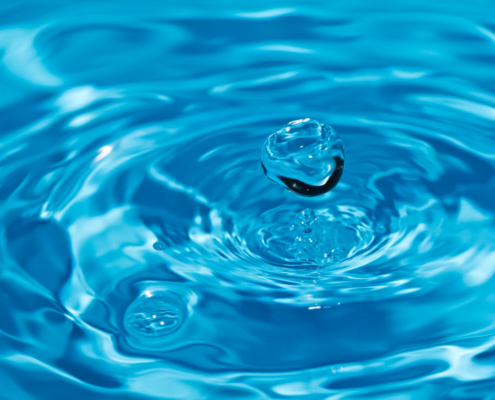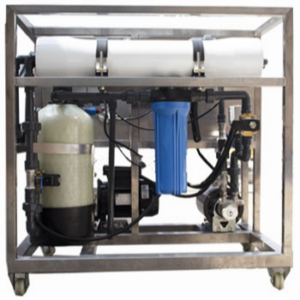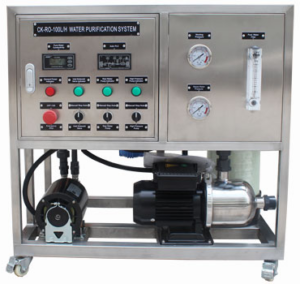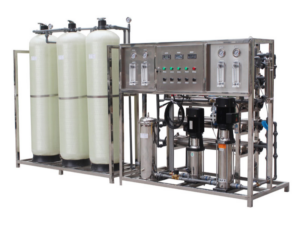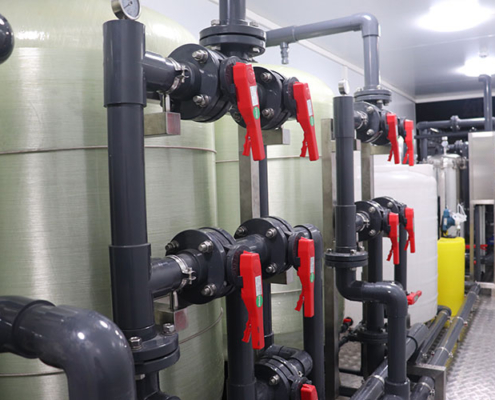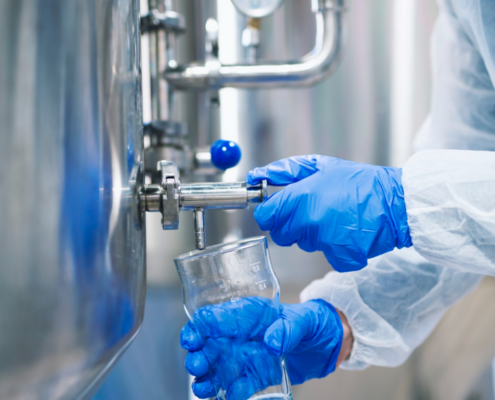What Is Seawater Desalination?
Seawater desalination is the process of removing salts and impurities from seawater to produce fresh, potable water. This is particularly important in arid coastal areas, islands, or places with limited freshwater sources. Today, over 20,000 desalination plants operate worldwide, providing billions of liters of freshwater every day.
There are several techniques used in seawater desalination, including:
Among these, reverse osmosis stands out due to its high efficiency, relatively low energy consumption, and compact system design.
How Reverse Osmosis Works
Reverse osmosis is a membrane-based separation process. It uses high pressure to force seawater through a semi-permeable membrane that allows only water molecules to pass, while rejecting salts, bacteria, and other impurities.
Key Components of an RO Desalination System:
-
Intake System: Pumps seawater from the ocean or other sources.
-
Pre-treatment: Removes suspended solids and prevents membrane fouling.
-
High-Pressure Pump: Generates the necessary pressure (typically 55–70 bar).
-
RO Membranes: Core component for salt rejection and water purification.
-
Post-treatment: Adjusts pH and mineral content, making the water safe to drink.
-
Brine Discharge: Returns concentrated saline water to the sea.
The typical salt rejection rate of modern RO systems exceeds 99.4%, producing clean, drinkable water from seawater or brackish sources.
Benefits of Reverse Osmosis Desalination
-
High Efficiency: Delivers high-quality freshwater at a lower energy cost compared to thermal desalination methods.
-
Compact and Scalable: Ideal for small communities, resorts, ships, and remote installations.
-
Environmentally Friendly Options: Can be powered by solar energy, reducing carbon footprint.
-
Low Maintenance: Modern RO systems are automated and require minimal operational input.
-
Modular Design: Easy to expand or relocate based on demand.
Applications of Seawater Desalination Systems
At NIROXX, we design and support desalination solutions for a wide range of use cases:
-
Private Homes and Villas: Reliable water supply for remote or off-grid residences.
-
Hotels and Resorts: Ensures consistent freshwater quality in tourist destinations.
-
Agricultural Irrigation: Provides clean water for crops in arid coastal regions.
-
Maritime Use: Onboard desalination for yachts, ferries, and commercial vessels.
-
Emergency Relief: Rapid deployment units for disaster zones and humanitarian operations.
We tailor every system to local conditions, including solar-powered reverse osmosis units for fully autonomous operation.
Sustainable Desalination with Solar Energy
A major challenge in traditional desalination is energy consumption. However, combining seawater desalination with solar photovoltaic systems drastically reduces operational costs and carbon emissions. NIROXX Engineering specializes in solar-integrated systems that ensure 24/7 freshwater availability using clean energy.
Our systems can operate with or without battery storage and are ideal for areas with good solar potential—such as Cyprus, the Mediterranean, and Africa.
Monitoring, Maintenance & Remote Operation
Every NIROXX desalination unit can be equipped with IoT-enabled monitoring, allowing operators to check performance, water quality, and energy use in real time. Predictive maintenance reduces downtime and ensures long-term reliability.
Conclusion: Future-Proof Water Supply Starts Today
Seawater desalination with reverse osmosis is no longer a luxury—it’s a necessity for regions with limited freshwater sources. At NIROXX Engineering Ltd., we believe in providing efficient, durable, and environmentally friendly water solutions tailored to real-world needs. Whether you’re a private homeowner, a hotel manager, or a municipal planner, our modular and solar-powered systems offer peace of mind in a changing world.
Need a seawater desalination system?
Contact NIROXX Engineering today and discover how we can deliver fresh water from the sea—smart, safe, and sustainable.
